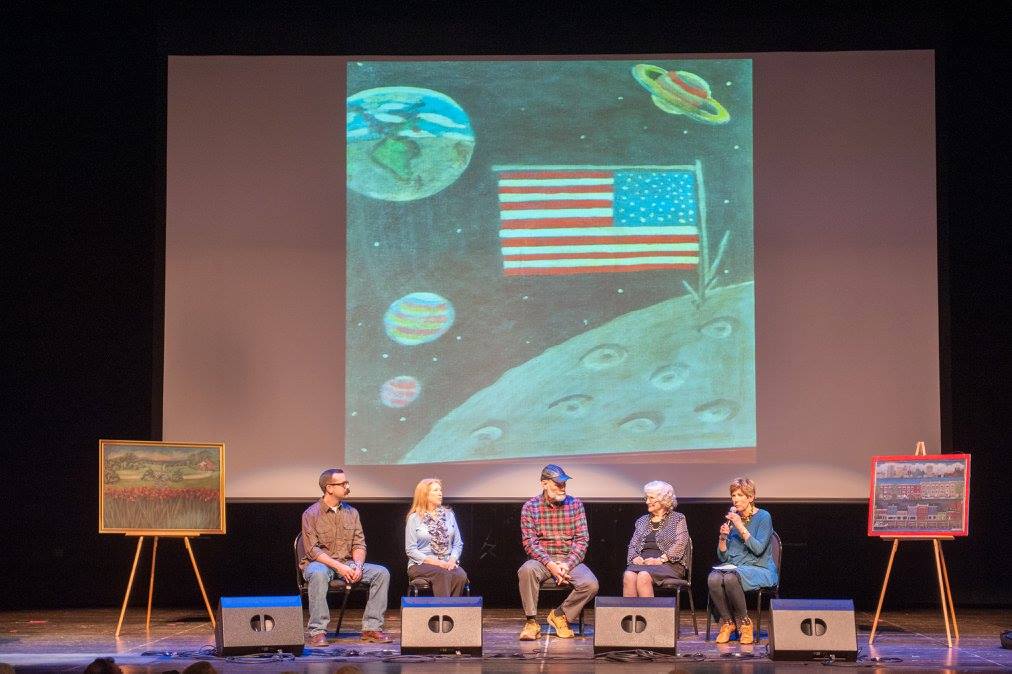Earlier this month, Maryland Traditions recognized Baltimore’s famous painted screens and the stewards of this unique rowhouse art at the 2014 ALTA Awards. Please enjoy a few photographs from the evening by Edwin Remsberg Photographs and join us in congratulations Elaine Eff and all of the screen painters who sustain this tradition today! Read on for more details about this essential Baltimore tradition.
The Painted Screens of Baltimore is one of the most iconic and well-known living traditions unique to Baltimore City, celebrating its 101st birthday this year. Rooted in the vibrant neighborhoods of early 20th century East Baltimore, where they dotted the streets of endless row homes, the screens provided a decorative means of ensuring privacy: the painted exteriors “trapped” the vision of onlookers, preventing them from seeing inside. Such privacy was especially important during the warmer months when open windows provided much-needed ventilation. This clever invention is credited to William Oktavec, a storeowner on the East side from the Czech Republic (as it is known now).
While Oktavec painted his first screen in 1913, the tradition continues today through a variety of forms – from window screens to fly swatters and outdoor patio furniture – that reflect an evolution of innovations and tastes. Roughly a dozen screen painters, many of who have learned from the older generation, including John Oktavec, William’s grandson, are active in teaching the skills and meanings to younger enthusiasts.
In 1985, the Painted Screen Society was founded by folklorist Elaine Eff, co-founder of Maryland Traditions and author of The Painted Screens of Baltimore: an Urban Folk Art Revealed, and Dee Herget, who has been painting screens since the late 1970s, having learned “the secret” from the “old masters” of the time. The Society is active in promoting the living tradition to the public through demonstration events, classes, and museum and gallery exhibitions, and has helped to keep it alive within the city and beyond.

